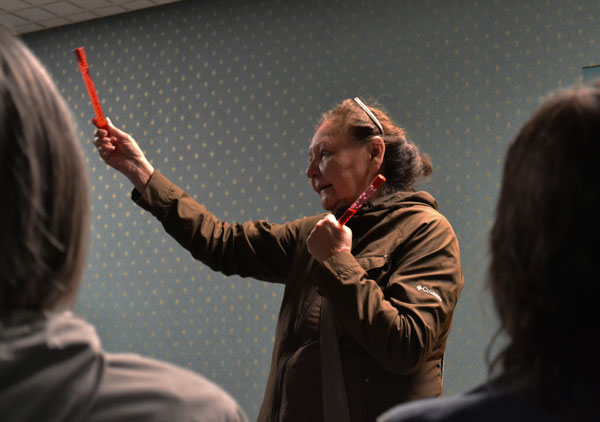
“People can live well with diabetes. Not everybody has to be on dialysis or vision loss or amputation. There are ways to manage the disease, but there’s lots to learn.”
– Brie Hnetka, Diabetes Canada Regional Director
Esther Badger’s First Nations family has a history with diabetes.
Her late father and older sister were diabetic, and she had gestational diabetes while pregnant with her last child. The disease went away when she gave birth.
“For me, it was a shock because I tried to stay healthy, eat right,” she said.
But, because diabetes is primarily genetic, Indigenous people in Canada are three to five times more likely to get the disease than the general population and 85 per cent of Indigenous children will develop diabetes in their lifetime.
This is why Diabetes Canada hosts their Indigenous Gathering in Prince Albert.
The 16th annual event took place on Wednesday at the Exhibition Centre. It provided booths from health sectors and guest speakers for networking, information and support.
One of the guest speakers was Patrick Head, who needed a kidney transplant because of diabetes.
Badger said these are her favourite types of presentations.
“I love hearing stories of people who have been through it and lived it and that way you can meet them and ask them questions. I’d like to have speakers on people that lost a foot or their leg or their eyesight, things like that, to diabetes,” she said.
“It’d be nice for people to learn and see what could happen.”
This is her third year attending the event.
Other presentations were on diabetes medications and holistic approaches, nutrition and the new food guide and complications.
“The complications of diabetes is what kills people,” said Brie Hnetka, regional director for Diabetes Canada. “It’s the heart attacks; it’s the strokes, the amputations, the blindness and the kidney disease. Those all come with diabetes.”
She said the Indigenous gathering is usually held in Prince Albert because it’s close to many northern First Nations communities.
“The message that we want to get out is that there is hope and in these communities, people can live well with diabetes. Not everybody has to be on dialysis or vision loss or amputation. There are ways to manage the disease, but there’s lots to learn,” explained Hnetka.
She added there’s many misconceptions about Type II diabetes, which is when the body is not producing enough insulin or the cells aren’t accepting it.
“One of the most popular misconceptions is you ate too much sugar and that’s why you got diabetes, that people living with Type II diabetes or were diagnosed with Type II diabetes brought that on themselves by living an unhealthy lifestyle or they’re overweight,” she said.
Along with the Indigenous population, African, Filipino, and East Asian people are also more likely to get diabetes because of genetics.
Diabetes Canada also brought in Carlin Nordstrom, a former National Hockey League (NHL) player. He spoke to youth about starting healthy habits at an early age to prevent or delay the disease.

